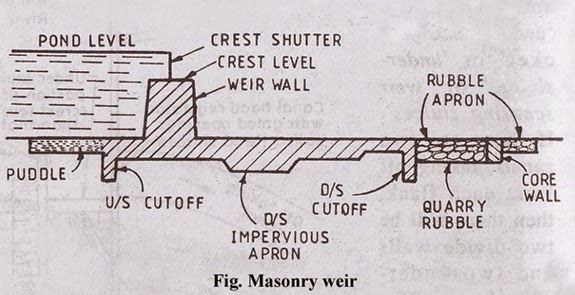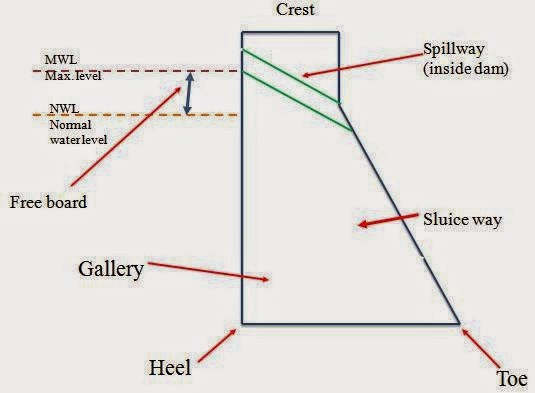How dams are constructed
How the dams are constructed
Construction of a dam project is carried out at the site of the dam itself and also in other places such as landfill site, quarry rubble, clay and gravel borrow areas and road works that may be near the site of prey or, in other cases, it may be considerable distances from the dam site.
From the point of view of the construction site of the dam is in the area of the river bed, which is normally submerged in the river and valley sides pillars or above the riverbed. You can not work carried out in the area of riverbed until the river has been diverted, usually through a tunnel or canal. After the departure area of the river bed is dry and the construction of the dam wall can begin.
Before the dam wall can be built two important preliminary steps must be completed: the area of dam foundation should be stripped of overburden (ie, material, usually ground, which is not suitable for building dam to be removed and rejected) and the foundation for the dam shall be prepared. Preparation Foundation generally consists of two very different activities: the elimination of pockets and seams of weak material and replacing this material with "dental" concrete, so called because the work filling cavities in the teeth resembles; the second aspect of the foundation preparation is grout. Grout involves drilling holes (often at very great depths, equivalent to the height of the dam in some cases) and then pumping these holes filled with grout (a mixture of cement and water). The purpose is to fill the grout cracks in the base of the rock on which the dam is to be built so that water will not leak out of the tank after the dam is finished.
Once the preparation of the foundation has completed construction of the dam wall itself can begin hauling, dumping and compaction of construction materials such as clay and rubble. Compaction takes place to ensure that the filler is placed as, have the highest density. Will properly compacted fill desirable engineering properties of high strength and low settlement over time, and in the case of clay filler for dam core, low permeability, it is important to reduce the probability of failure by pipes or internal erosion.
A typical sequence a dam filling is:
Step 1: digging diversion tunnel and build cofferdams. The end of this stage is marked by the milestone of diverting the river through the diversion tunnel.
Step 2: Strip dam foundation sterile. Perform the treatment foundation and grouting. Excavating and transporting construction fill materials from their sources and place and compact on the embankment of the dam. The end of this stage is marked by the milestone of diversion tunnel closure to begin storing water in the reservoir. Excavation of the spillway will also be launched during this stage.
Step 3: Complete outlet works, spillway and all other parts of the dam project.
Flood management during construction is an aspect always pay considerable attention by engineers who design the dam. Before the dam design can be completed engineering geologists have to find sources of suitable clay, gravel and rock that can be used as building materials in the wall of the dam can be built.
In fact, a dam project goes through four stages during their life



Comments
Post a Comment